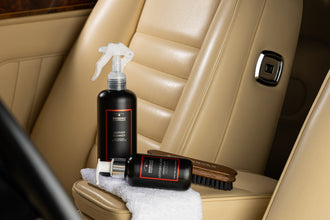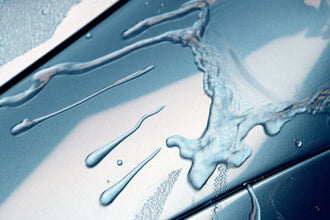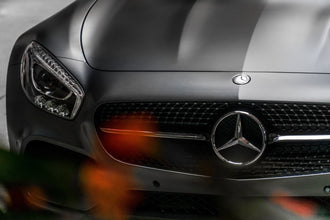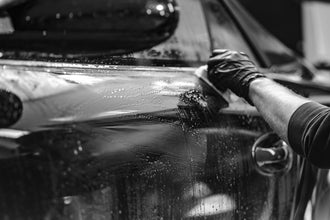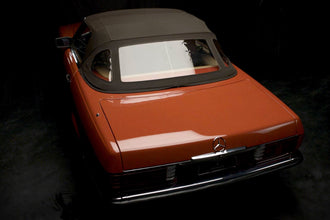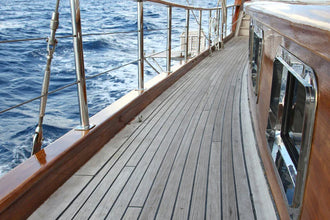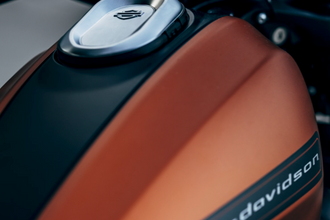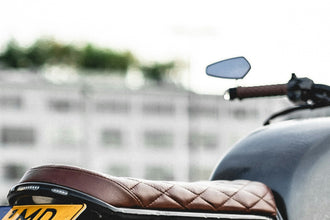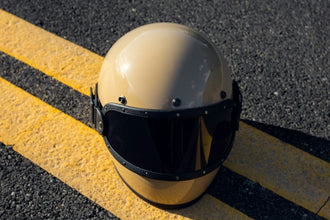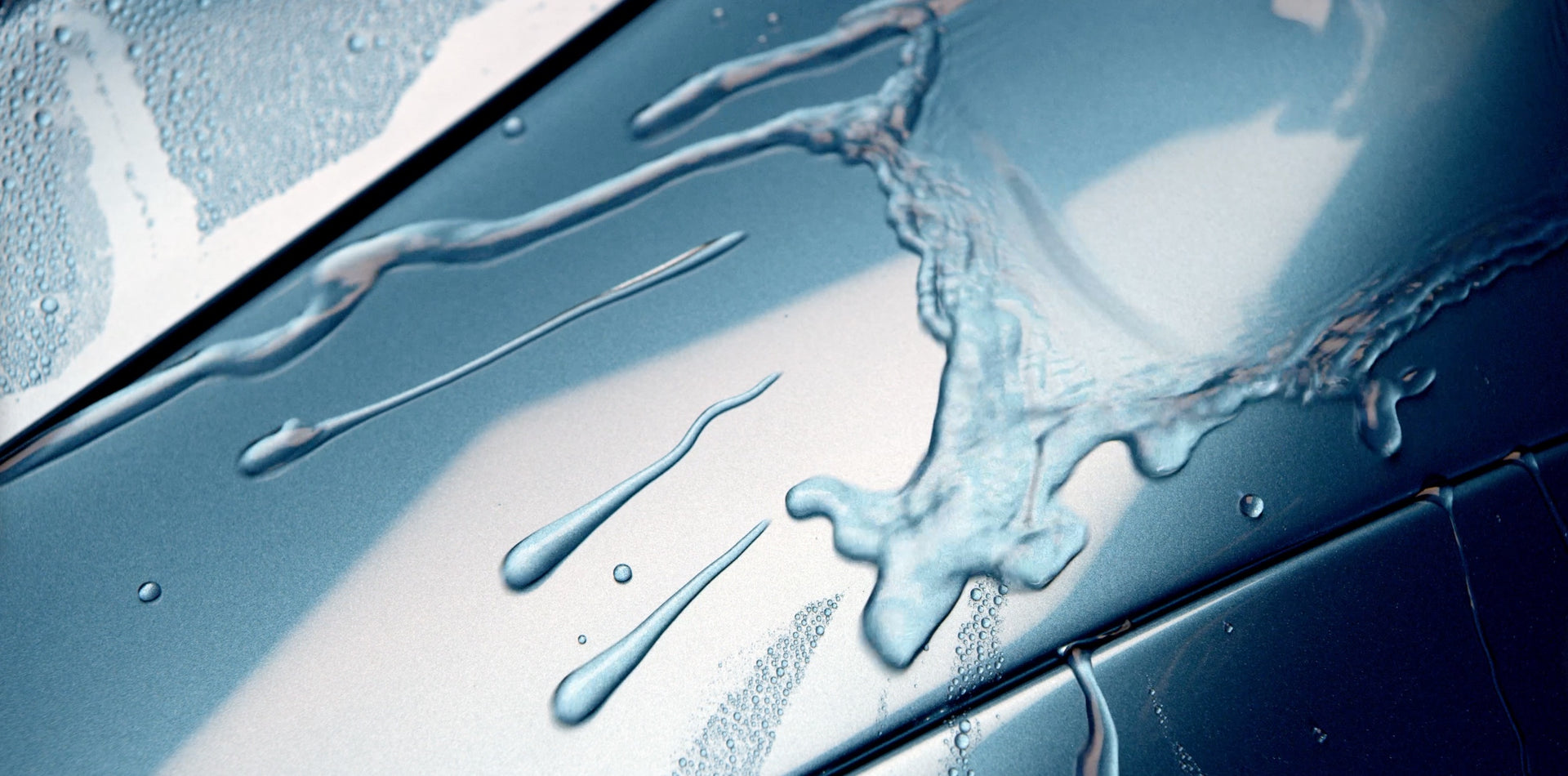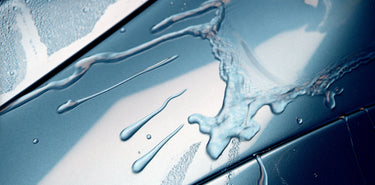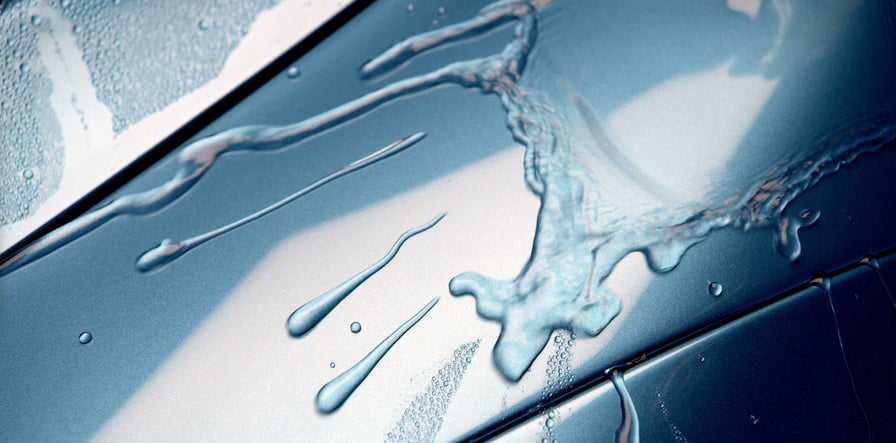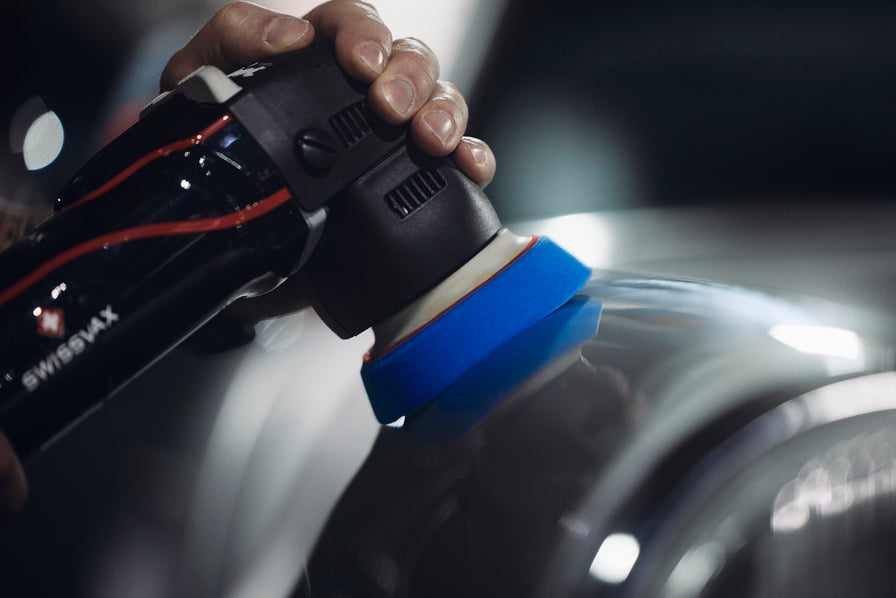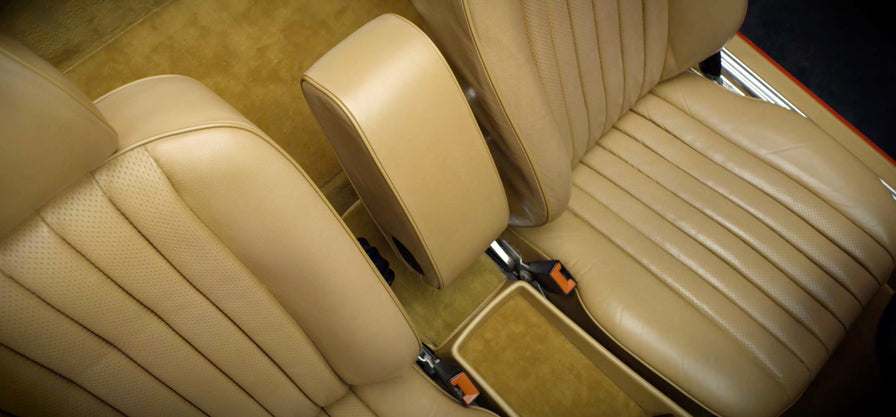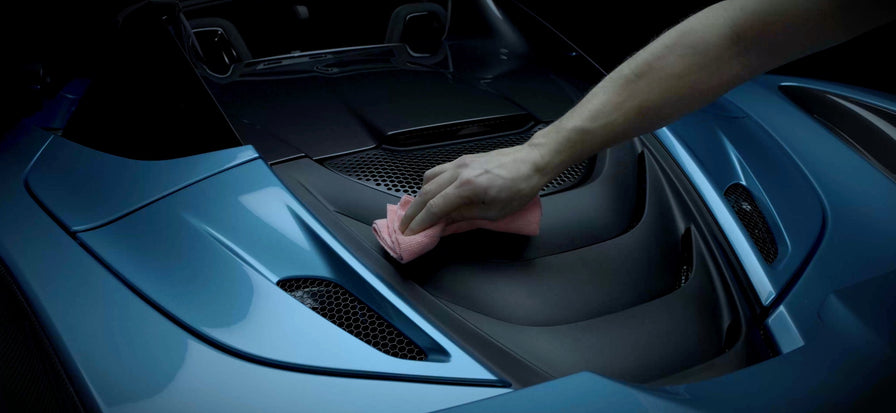Frequently asked questions
-
About Carnauba Wax
The art of composition
The use of carnauba waxes for glossy surfaces has a long tradition dating back to the 19th century. However, the disadvantage of these waxes was their low durability, as 100% pure carnauba wax can be easily wiped away.
The SWISSVAX secret of the exceptionally durable carnauba formulations lies in the combination of carnauba wax with other waxes, fruit oils, and the hours-long manufacturing process in artisanal production. Learn more about carnauba wax.
Handcrafted, can by can
Even today, our carnauba waxes are exclusively handcrafted and filled can by can in our manufactory. The high-quality and complex formulations are not suitable for industrial production.
Our waxes, made from organic raw materials, do not leave white residues on rubber or body edges.
A 200 ml can is enough for up to 15 applications.
For the perfect wax result, the paint must be pre-treated with our Cleaner Fluid Regular.
-
Purchase products / On-site consultation in Fällanden
Flagshipstore and Car Detailing Center Fällanden
We would be pleased to welcome you at Tämperlistrasse 3, 8117 Fällanden for a consultation and product purchase in our flagship store at headquarters.
A free quote for the preparation of your vehicle can be provided by our experts without an appointment.
Factory Store & Service Center for vehicle detailing:
Swissvax AG
Tämperlistrasse 3
8117 Fällanden
Phone: +41 840 851 851
Email: customerservice@swissvax.com
Opening hours
Mon. – Fri.: 08:00 – 12:00 / 13:00 – 17:30
-
"With which wax can I polish..?" The difference between wax and polish
- The term "car wax" commonly used by laypeople actually refers to "car polish." Car polishes are mostly liquid, containing water, solvents, abrasives, and small amounts of waxes and polymers. These products are applied and polished off after drying, either by hand or with a polishing machine. In contrast, pure, genuine waxes are completely free of abrasives.
- SWISSVAX paint care is done in 3 steps: WASH (with 'Car Bath' or 'Lavish Shampoo') / CLEAN PAINT (with 'Paint Rubber' and 'Cleaner Fluid') / SEAL PAINT (with SWISSVAX Carnauba Wax)
Politur
Our Swissvax car polishes "Cleaner Fluids" are not only effective against paint scratches but also create a perfectly smooth paint base. Depending on the type of scratch removal - manual or with the help of a polishing machine - you can choose different intensities of polish and thus create a like-new paint finish. Holograms can be removed just as easily as clouds. Swissvax Cleaner Fluid polishes for hand polishing or professional polishing with a machine.
The polish is easy to apply and can be rubbed with pressure, causing the micro-granules to grind each other down, making the polish finer. The unique formula of Swissvax car polishes and polishes avoids overly aggressive polishing.
Wax
Carnauba waxes not only make your paint shine. For deep reflective surfaces and a completely new definition of "shine." The paint surface receives a long-lasting natural wax sealant. To this day, our car waxes are exclusively handcrafted and filled can by can in our manufactory.
-
Does a 2nd layer of wax make sense?
Yes.
A 2nd layer of wax increases the protective layer of the sealant. This has two advantages: The refraction of light falling on the paint surface is further enhanced, and the protective layer has longer durability. Between the first and second layer of wax, you should wait 3 hours to allow the wax to bond perfectly with the paint.
-
How much does vehicle detailing cost?
As unique as your vehicle, detailing can also be individualized based on various factors/parameters.
That's why we take the time to assist you, even during a spontaneous visit to our Car Detailing Center at Tämperlistrasse 3, in 8117 Fällanden. We would be happy to advise you and provide a free quote.
Factory Store & Service Center for vehicle detailing:
Swissvax AG
Tämperlistrasse 3
8117 Fällanden
+41 840 851 851
Opening hours
Mon. – Fri.:
08:00 – 12:00
13:00 – 17:30 -
Do I apply Lotos Speed after waxing?
Yes.
Lotos Speed can be additionally applied on top of the wax sealant. This has the advantage of making the protective layer even more water-repellent and providing longer durability. After applying Lotos Speed, you should wait 3 hours to allow the wax to bond perfectly with the paint.
-
Why can't I use Cleaner Fluid (hand polish) as a machine polish?
SWISSVAX hand polishes (Cleaner Fluid) and machine polishes (Cleaner Fluid PROFESSIONAL) differ, among other things, in their viscosity. Hand polishes are more liquid, while machine polishes are thicker.
Cleaner Fluid Regular is not suitable for machine polishing. The product is too liquid and would cause too much splatter. If you want to work with a polishing machine, you should use Cleaner Fluid Professional Regular.
-
"Cut Performance" of the Cleaner Fluid Professionals (machine polish)
On a scale of 0 to 100:
0 = Zero Cut
100 = Full Cut
Professional Regular: 22 -> 1-stage polishing possible
Professional Medium: 30 -> 1-stage polishing possible
Professional Strong: 51 -> 2-stage polishing necessary,
as the cut begins at 55 and therefore cannot achieve the finish cut.
*The longer you work with the polish and the initial cut, the finer and deeper the cut will be afterward.
The professional version of Regular (instead of the hand polish) is a completely different product for machine polishers:It is a nano-polish and the softest of the 3 professional polishes (Regular, Medium, Strong)
-
What is PTFE?
PTFE resin (polytetrafluoroethylene) belongs to the family of paraffin polymers in which hydrogen is partially or completely replaced by fluorides.
The original PTFE resin was invented by DuPont in 1938 and was named Teflon. PTFE has extraordinary resistance to chemicals and one of the lowest coefficients of friction of any material known to us today.
-
Opaque: for matte paints and matte films
On matte finishes, no commercial polishes, waxes, insect removers, or insect sponges should be used. To maintain the matte appearance of matte finishes (and not polish them to a shine), special products are needed, which have been developed by Swissvax under the name "Opaque" exclusively for matte paints and matte paint films.
The premium wax from the Opaque line, with its 40 vol.% pure Brazilian Grade One Carnauba wax, provides impressive protection against fingerprints, dirt, water spots, and insect residues. The matte appearance of the matte paintwork is fully preserved. The Opaque wax is extremely popular with both private and professional users due to its very easy application.
For the perfect waxing result, the paint must first be treated with our Pre-Cleaner Opaque.
-
Can I polish matte paint?
Matte surfaces cannot be polished, as they would otherwise become shiny. Therefore, there is no polish for matte paints.
However, before sealing, the paint must still be cleaned, including preparation for the wax: with Swissvax Pre-Cleaner Opaque.
-
How do I seal matte-painted wheels?
For a vehicle with matte paint, the following procedure and products are recommended:
- Wash and dry the vehicle
- Spray an area with Pre-Cleaner Opaque and wipe off within 10-15 seconds, then work on the next area
- Apply the Opaque wax to a small area, wait briefly (about 15 seconds), and then polish off, then work on the next area.
For matte wheels, the following procedure and products are recommended:
- Wash and dry the wheels.
- Spray an area with Pre-Cleaner Opaque and wipe off within 10-15 seconds, then work on the next area.
- Apply Autobahn wax to a small area, wait briefly (about 15 seconds), and then polish off, then work on the next area.
-
Wax or ceramic coating? Advantages and disadvantages.
A ceramic coating has a significant advantage: increased hydrophobicity (water beading).
A Carnauba wax does not achieve this strong hydrophobicity but is significantly advantageous in terms of gloss level and application.
In addition to the benefits of long-lasting protection and water beading of the ceramic coating, there are also some disadvantages:
- The paint surface is permanently coated with an additional layer
- Long-lasting, but with gradually decreasing care level
- Application is laborious and comes with some risks
- Not scratch-proof, but more resistant than waxes
- Scratches cannot be easily polished out
- In case of a repaint, the coating must be reapplied, resulting in a difference (even in color) from the existing ceramic coating
The advantages of a SWISSVAX Carnauba wax include:
- Various gloss levels depending on the volume of Carnauba content
- Easy to apply, always successful, even without prior knowledge
- The wax can be reapplied anytime, even on repainted areas that experience the most wear (from the strongest mechanical impacts of the road)
- Consistent level that can be maintained, as retreatment of stressed areas is possible
In other words, ceramic or wax coatings are two different worlds.
If you choose a ceramic coating, the final layer should also be ceramic to ensure hydrophobicity and hardness.
If you choose our Carnauba waxes, the top layer should also be Carnauba, otherwise, you lose the characteristic "lollipop" shine (wet look) and water resistance (rain).
Wax on ceramic: possible, but on ceramic, the wax will last only a shorter time, about 2 months maximum.
Ceramic on wax: "works", as the aggressive chemistry of the ceramic dissolves the wax.
Our recommendation: Carnauba wax with our water-based KERAMIQ9 for the combination of the highest gloss level and high hydrophobicity.
More information can be found at: SWISSVAX KERAMIQ9.
-
Does Swissvax offer a ceramic coating?
Yes, KERAMIQ9 - the infused water-based ceramic coating for private and professional users by Swissvax.
Easy to apply, removable, and highly water-repellent.
Extends the lifespan of paint surfaces treated and sealed with SWISSVAX polishes and waxes by several months.
More information: KERAMIQ.
-
How high is the gloss level with KERAMIQ9 (without pre-treatment with Cleaner Fluid + wax)?
KERAMIQ9 does not change the gloss level (which is why it is also well-suited for use on matte finishes).
Gloss always depends on reflection (mirroring) and saturation (color depth). Both are significantly achieved through perfect paint preparation.
-
Why are there two wheel cleaners? Wheel or Wheel Spray Forte?
In our Swissvax range, we offer you two wheel cleaners, each with different advantages and disadvantages:
WHEEL is our traditional wheel cleaner concentrate.
It is based, among other things, on peppermint oil and can be concentrated differently depending on the level of wheel dirt. WHEEL has several advantages:
- It is more economical in regular use than WHEEL SPRAY FORTE.
- Due to individual concentration, only the amount of cleaner required by the wheel dirt needs to be used.
This usually allows the wheel wax coating to last longer.
While traveling, WHEEL is much more space-saving, as you can usually find water anywhere.
WHEEL works on pre-cleaned or newly dirty wheels.
WHEEL also has some disadvantages:
- On neglected wheels with "baked-on" brake dust, it can be too weak and may not clean completely.
- The WHEEL/water mixture is very thin - multiple sprays are necessary during wheel cleaning.
WHEEL SPRAY FORTE is a highly advanced wheel cleaner based on sulfur capolate.
It is completely acid- and even phosphate-free and can be used on all wheel surfaces (including magnesium or painted wheels). WHEEL SPRAY FORTE also has several advantages:
- As a modern wheel cleaner, WHEEL SPRAY FORTE has a color indicator to show when the cleaning process is complete.
- WHEEL SPRAY FORTE is more active in cleaning and works reliably even on neglected wheels with "baked-on" brake dust.
- WHEEL SPRAY FORTE is thicker and adheres well to surfaces.
As disadvantages, we see:
- WHEEL SPRAY FORTE has a slight sulfur odor that we cannot completely eliminate
- It is less economical than WHEEL
- The concentration is always the same strength, even when not necessary - therefore, the wax coating lasts less time than with WHEEL
On multi-day long-distance trips on highways abroad, WHEEL SPRAY FORTE is certainly ideal. In Switzerland, we do not drive long distances and generally slower than in Germany, for example. And in that case, WHEEL in combination with a mixing bottle is ideal.
-
Quick Finish, Nano Express, and Lotos Speed - when should each be used?
SWISSVAX offers 3 different detailing sprays that are completely different from each other:
- QUICK FINISH is a quick cleaning solution for in-between. It removes light dust in the showroom or garage, on the go for scratch-free removal of insect residues, bird droppings, fresh tree sap stains, yellow droppings from bees and wasps, water spots after car washing, etc. It can be used on car paint, windows, chrome, wheels, plastic (except textiles).
- NANO EXPRESS is a paint and plastic refinisher (reviver). It is particularly suitable when there is no time for a full SWISSVAX paint preparation (quick care after car washes in car washes, used cars, rental cars, or even auction vehicles). On used car paint, Nano Express creates stronger color saturation again, and removes car wash marks and micro-scratches (temporarily, about 1 month). The application time per vehicle is around 30 minutes. The application time per vehicle is around 30 minutes. For refreshing and maintaining plastics, acrylic windows, vinyl rear windows, door folds, and entry sills, Nano Express is excellent and has long been an insider tip.
- LOTOS SPEED is a quick sealant for cleaned paint and windows in the exterior and interior of cars (e.g., high-gloss lacquered precious woods, but also high-gloss kitchens). The paint surface receives (temporarily, about 1 month) an extremely smooth and water-repellent surface - recommended directly after car washing or drying (not compatible with Keramiq9).
-
Shelf Life of SWISSVAX Products
SWISSVAX waxes have a shelf life of approximately seven to ten years when stored correctly and sealed.
For the rest of the range, the shelf life is at least two years, provided proper storage is maintained (in undamaged containers?).
Storage temperature affects the shelf life:
Our products can be ideally stored in a basement at around 10-14 degrees Celsius.
Also, protect the products from possible frost or temperatures above 30 degrees Celsius.
For liquid products, we recommend shaking well before use.
-
Are our products eco-friendly and biodegradable?
Since 1930, the Anwander family has been dedicated to the manufacture and care of paints, antifouling coatings for underwater areas, and wood varnishes. The care products for automobiles and boats were originally made solely for the personal use of the company founder, Hans Anwander.
Although terms like eco-friendly, biodegradable, and sustainable were not yet topics in the 1930s, his care products were intended to be safe for both him and the environment. Thanks to this philosophy, SWISSVAX products can now be offered internationally in over 30 countries and are classified neither as hazardous materials nor harmful to health, even under strict GHS (Global Harmonizing System) standards.
Our "Wheel" wheel cleaner concentrate, for example, contains peppermint oil as an active ingredient, and our waxes consist largely of Carnauba (the hardest and most transparent natural wax in the world), beeswax, and fruit oils. We use only "grade one" Carnauba wax, which meets the standards for cosmetic products. It is hand-scraped from Carnauba palm leaves and not boiled in kerosene, as is common in the Far East.
Although these products are eco-friendly and biodegradable, phosphates in large quantities can lead to the over-fertilization of the underwater fauna in our waters, resulting in poorer water quality in our lakes and ponds. An example that the amount of active ingredients used also has an impact on the sustainability of products. SWISSVAX products achieve top performance with small amounts (as seen in our small bottles and cans).
That's why we refer to our top SWISSVAX products in English as "best-natural," meaning "as natural as possible." And that's more than most other manufacturers can claim.
-
How do I wash microfiber cloths, polishing pads, etc.?
Our microfiber cloths and textiles, as well as white cleaner pads, wax pads, and polishing pads/hand pucks, can be washed at 40 degrees Celsius (without using fabric softener).
We recommend washing textiles with wax residues separately from the rest of the textiles (especially Micro-Dry drying cloths and Micro-Glass Duo Set).
For polishing pads, if available, select the machine program: "Extra/Add-Water."
-
About Microfiber
Microfiber cloths vary greatly in quality. Here are some tips on how to better distinguish quality cloths from cheap mass-produced ones:
a) The microfiber quality:
Quality cloths absorb 7 to 8 times their weight in liquids because they have split fibers and thus have a larger surface area for absorption. Cheap cloths usually have unsplit microfibers because the splitting process is very complex and therefore expensive.
b) The microfiber size:
High-quality cloths have "real" microfibers ranging from 0.01 to 0.02 denier. The more microfibers available in the fabric, the better the results a microfiber cloth can deliver. The fibers of cheap cloths are always thicker (up to 0.5 denier or more, which corresponds to the thickness of a normal polyester thread).
c) The microfiber fabric:
A blend of 80% polyester and 20% polyamide is the quality standard today, while the luxurious SWISSVAX 70/30 blend will absorb liquids significantly better and faster. Here, too, quality comes at a price. Cheap cloths are often made of 100% polyester or contain only a small amount of polyamide because polyamide is much more expensive than polyester. However, this greatly reduces the absorption capacity.
d) The edges:
For use on car paint, we believe only microfiber cloths without hems, with sealed hems, or with silk hems are suitable. With microfiber cloths with sewn hems, you risk scratches and/or streaks on the paint.
-
When should I apply Seal Feed?
SEAL FEED is an intensive care product for rubber seals and plastics. Protecton is suitable for new seals and plastic parts. For older or weathered seals and plastic parts, Seal Feed is the right choice.
In Central and Northern Europe, 1-2 applications per year are sufficient. In Texas, Arizona, etc. in the USA, or in the Middle East, Seal Feed will be used monthly. In other words: It depends heavily on the climate!

